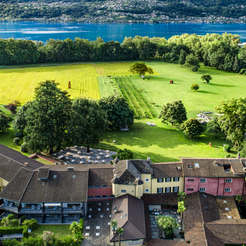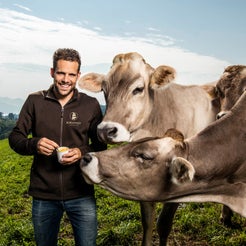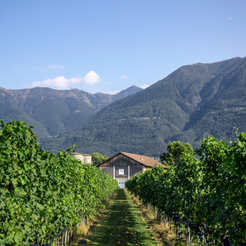Our rice
Pioneers since 1997
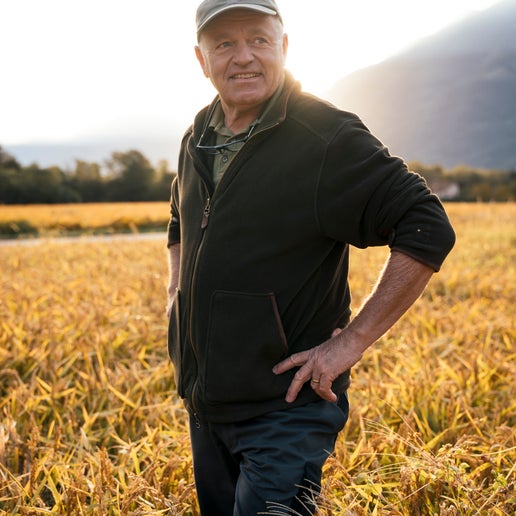
It was back in 1997 that Markus Giger, head of agriculture and who has been with the company for over 40 years, started with this experiment. Indeed, in the mid-1980s there was a collapse in the prices of maize, wheat and soya. Profits were too low and the business was facing ruin. The farm manager at the time starting looking for alternatives.
What would work? The choice obviously fell on risotto rice, which plays a key role in the region's traditional menus.
The loto variety turned out to be the one suitable for ripening in Ticino. These particular rice grains are ready for harvesting in just 150 days. Sowing takes place at the end of April, with harvesting at the start of October. In the months in between, Ticino enjoys lots of sunshine and warm temperatures.
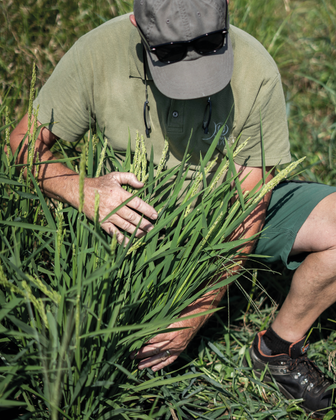

Our rice fields differ from the typical rice terraces that are seen in Asia. The difference lies in the method of cultivation: on our grounds, the rice is cultivated using a dry process. The sandy ground and uneven fields are unable to guarantee even flooding, and in spring the water would be too cold and would need to be warmed up.
So the dry process saves both water and energy. Most importantly, no methane is released. Methane is a greenhouse gas and is created in flooded fields, due to low oxygen levels. Compared with other types and cultivation methods, our rice is more environmentally friendly and saves water and energy.

A great deal of experience is needed to set the right time for harvesting. The grains are usually ready towards the end of September or the start of October. The stalks are then somewhat over a metre high, and the heavy golden panicles begin to bow down. But height and colour are not what determines the right time for harvesting; moisture is most important. The rice grains should have a moisture content of exactly 25 per cent. How does Markus calculate the right harvesting time? “I have a rapid moisture meter, but I mainly trust my years of experience” he says with a laugh.
Depending on the weather, a decision on when to combine is made from one day to the next. Once the time is right, everything happens very quickly. Row by row, the rice stalks are harvested, the grains end up in the belly of the machine, and the dusty straw is left behind on the field. From the combine, the harvested crop is transferred directly into a trailer and taken to the drying facility. There, the harvested grain is dried at around 45 degrees in a convection oven for up to 20 hours.
The next step is hulling. This involves the removal of the outer membrane, the technical term for which is the “hull”, through friction. Brown rice is the result of this process. Further processing occurs away from Ascona. Further husking, polishing and buffing takes place in specialised mills in Taverne in the canton of Ticino or Brunnen in the canton of Schwyz.
The resulting white rice is then packaged and sold under the label “Riso Nostrano”. In a good summer, around 400 to 450 tonnes of rice grains are harvested at Terreni alla Maggia. However, over 40 per cent of this is lost during drying and husking.
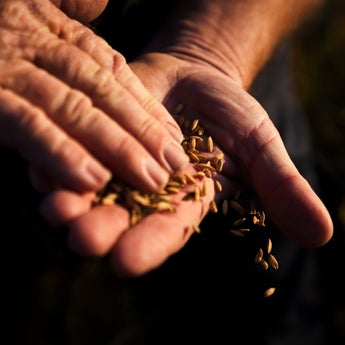
Our rice recipe
What they say about our rice
Switzerland Tourism (Schweiz Tourismus - foto Lorenz Richard)









